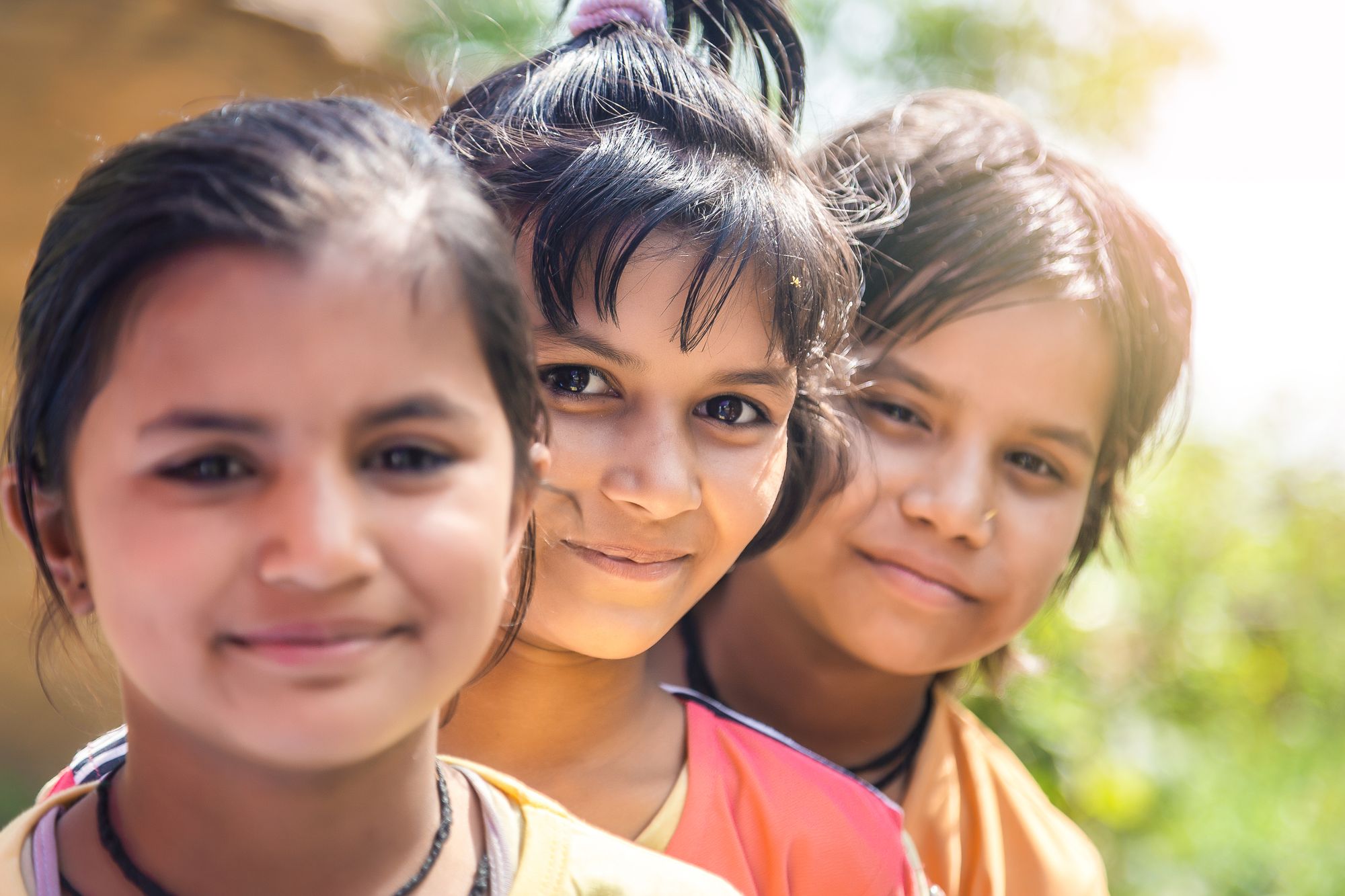The schemes that the Government of India has for girls of our country play a very important role as it provides financial support to young girls and their families. To ensure the same the Government of India has several beneficial schemes and policies for the girl children of India. These schemes aim to raise girls’ social status and their marriageable age so that they can study and be independent. To achieve the same the best way is to build up a sufficient corpus for child education and marriage is to keep aside a major portion of your savings or invest in equity funds.
The schemes in India are so beautifully planned that you just need to invest a small portion of the savings in the account and reap the benefits in the long run. Looking at the high rates one can certainly build an adequate corpus to provide the girl children with a brighter future. Girl children are the future and they should have an equal role in the nation’s progress. These schemes have helped reduce female foeticide and infanticide rates.
To enlighten us in detail about these schemes we spoke to Disha Bansal, a Lawyer. The one thought that got her to become a lawyer was to do something for the women/girl’s rights in India. Here is what she had to say about these schemes.

The Government of India has taken numerous measures to ensure the equality of a girl child. A huge number of welfare and financial aids are introduced to ensure the welfare, education, and health of the girl child. Below are detailed schemes and the details related to these schemes.
1. SUKANYA SAMRIDDHI YOJNA
Sukanya Samriddhi Yojna scheme is designed for the parents of the girl children. This scheme allows parents to set up a trust for their child’s eventual schooling and marriage expenses. All parents and guardians of girl children under 10 can open their accounts here. The parents can open up to two accounts for two of their children(exceptions allowed for twins and triplets).
-The account is portable anywhere in India and can be accessed to any branch of the post office Bank.
-Minimum deposit of Rs 250 to 1.5 lakh per annum to be given.
-Tax exemption under Section 80 of the Income Tax Act is available on the deposited amount.
-Maximum tenure of the accounts shall be 21 years from the date of opening the account or the marriage of the girl child whichever is earlier.
-Deposit of a maximum of up to 15 years from the date of opening the account.
-Partial withdrawal of up to 50% is allowed once the girl reaches 18 years of age.
-The account can be transferred from one post office to another, one bank to another upon valid submission of proof.
-You need a birth certificate, proof of identity of parents, proof of address, and passport size photograph to open the account. (This is the same for almost all schemes)
2. BETI BACHAO BETI PADHAO YOJNA
This program was initially launched in 2015 with initial funding of 100 crores and meant for districts considered to have a low sex ratio and successfully extended to other regions of the country too. The key elements of the scheme were to include Pre-Conception and Pre-Natal Diagnostic Act, 1994, nationwide awareness and advocacy campaign, and multi-sectoral action in districts. Various rallies have been organized by the Government to promote this Yojna. The scheme aims at tackling discrimination inherent in society that is faced by girls while changing the mindset of citizens in the country. It seems to address a wide gamut of issues including reducing the child sex ratio also enhance women empowerment. This is essentially an educational program to help change societal attitudes and does not entail the immediate transfer of funds. It endorses the right of a girl to inherit the property.
-The family should have a girl child below the age of 10 years.
-There should be a Sukanya Samriddhi Account that has been opened in an Indian bank.
-The child should a resident of India.
-The account remains exempted under the Act 1961 u/s 80C. The girl child’s account will be Tax-free.
-Maximum deposit of 1.5 Lakh per annum.
3. BALIKA SAMRIDDHI YOJNA
Balika Samriddhi Yojna was initiated in 1997 with a view to ensuring every girl child of the country has a chance of making a better future for herself. This aid is provided to all girls born to families belonging to weaker sections of society both in rural and urban areas. It aims to raise girls to legal marriage age and provide them with better education.
– The application is only eligible for up to two girls from weaker sections as mentioned above.
-The parents of eligible girl children cannot of an annual income of above Rs. 2,00,000.
-Rs. 500 provided at the time of the birth.
-Rs. 300-1000 annual scholarship while attending school is provided till the girl child completes her Grade 10.
-Maximum age limit enrolment is 10 years.
-The depositor should belong to a family that is below the poverty line.
4. MUKHYAMANTRI RAJSHRI YOJNA
Mukhyamantri Rajshri Yojna was launched in Rajasthan. It offers monetary benefits to parents of girl children starting from their birth till their higher education.
-Rs 2500 is given to the mother at the birth of the girl child.
-Once the girl child completes one year with all vaccinations done, Rs 2500 is given through a cheque.
-Rs 4000 at the time of admissions at any public school
-Rs. 5000 at 6th grade.
-Rs. 11000 at grade 11.
5. CBSE UDAAN SCHEME
This scheme was implemented by the CBSE education under the ministry of Human Resources Development Government of India. The goal of this scheme is to increase the enrolment of girls in prestigious engineering and technical colleges across India.
-The scheme offers free course material/online literature to 1000 selected girls.
-Virtual interaction courses for girls in 11th and 12th grade.
-Peer learning and monitoring opportunities for all deserving girl students.
-Student helpline services to clarify doubts, monitor student learning, and support technology.
-Score at least 70% in class 10(overall) & 80% marks in Class 10 for math and science.
-Annual family income should be Rs. 6 lakh per annum.
6. MUKHYAMANTRI KANYA SURAKSHA YOJNA
This scheme is yet another reward program introduced by the Bihar state Government to reward parents of every girl child. An amount of 2000 is released after the birth of a girl child.
7. MAZI KANYA BHAGYASHREE SCHEME
This scheme was launched in Maharashtra.
-The mother will get Rs. 5000 for the first 5 years after daughter birth.
-Rs 2500 till she reaches grade 5.
-Rs 3000 per year until grade 12.
-After 18 Rs 1 lakh per year for girl children education.
8. KARNATAKA BHAGYASHREE SCHEME
The Karnataka Governments Bhagyashree Scheme encourages the birth of girls in low-income households. It offers financial aid to children in the form of health care coverage up to a limit of Rs. 25,000 per year and an annual scholarship of Rs. 300-1000 up to class 10.
– Girls born after 31st March 2006 are eligible.
-The scheme is for two girl children.
9. LADLI LAXMI YOJNA OF MADHYA PRADESH
The Ladli Laxmi Yojna of Madhya Pradesh aims to improve the health and educational status of the state. It aims to discourage female foeticide by instilling in people a good mindset towards girls puberty and avoiding child marriages is one of the important statewide government girl child schemes in India
– National saving certificate worth Rs. 6000/- are acquired in their name continuously for five years
– The beneficiary receives Rs 2000/- at the time of admission to 6th grade.
– Rs 4000/- at the time of admission to 9th grade.
– The remaining balance is charged as a lump sum until the beneficiary reaches the age of 21 and appears in the 12th-grade test.
– A key requirement for receiving the money at age of 21 is the girl is not married until the age of 18.
10. THE CHIEF MINISTER GIRL CHILD PROTECTION SCHEME OF TAMIL NADU
Tamil Nadu’s chief minister’s girl child protection team aims to prevent gender inequality by empowering and securing girl children rights by direct government spending
– If the family has only one girl child, a sum of Rs 50,000/- is deposited in her name in the form of fix deposit.
– A family has 2 female daughters, a 25,000/- fix deposit is open in each of their names.
– From the 6th year of the deposits girl child receives an annual deposit of Rs 1800/- to help her pay for her schooling.
– The deposit is extended every 5 years when the girl child reaches the age of 18. the balance invested plus the interest to her is given in anyways.
– To receive this privilege the girl child must sit for a public test for the 10th grade.
Drawbacks Of These Schemes
- Some of the schemes may not be practical considering inflation. Today’s 40-50 lac may not have the same value in 15 years.
- Most of the schemes only include children below the poverty line, do not cover daughters in those families right above the poverty line who are leaving in prime circumstances. The schemes need to be a little more inclusive.
- There are different ministries in every scheme because of each we can face application clearance issues. Lack of cohesiveness between the ministries encounters loopholes in the civic administration. lastly, these schemes cover only 2 girls in a family.
How Can We Contribute Towards These Schemes
-We can talk about it and spread the word, enlighten people about the same. We as women and citizens of India can play our part by contributing to society. The best way to use your educational skills is to spread the word so that every girl child gets this gift of education which can make them independent and can get married at the right legal age.
-Encourage the successes of girls in the community.
-Support NGOs who are encouraging these schemes.
-Give girl children equal health opportunities.
-We can educate at least one girl child so that together we can educate them all.
-Don’t encourage child labor.
The Government of India has launched these schemes across India with the goal of improving the social attitude towards female children. These schemes also aim at elevating their status in society. These programs have been a vital element of assisting females on a national as well as a state-by-state basis. Celebrating girl children has become a trend in India now. These schemes have started giving fruit as the level of awareness among the people is increasing. Therefore, people now have a serious impact to work for girl child upliftment in society. The success of these schemes will add to tremendous economic growth in India. The future of a country hinges on ensuring the generations to come are adequately represented, qualified, and able to carry the development. As a nation our past is rife with gender inequality but aiming to rectify that situation, our Government has come up with these schemes.
Follow @malinisgirltribe on Instagram for more content like this and download the Girl Tribe by MissMalini App to join our Mommy Life community.

